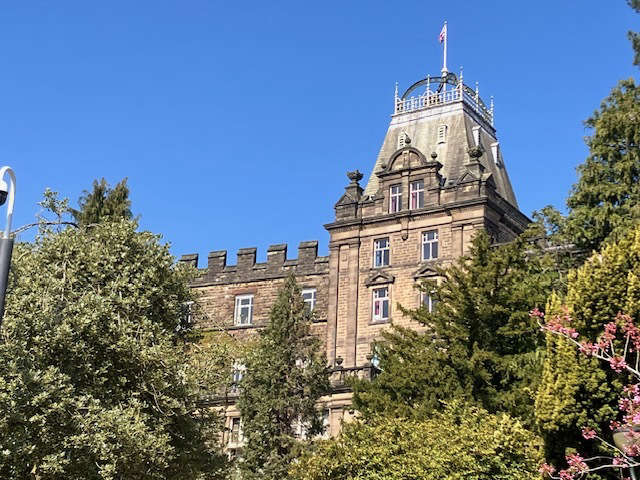
Derbyshire County Council’s new Reform administration has been urged to agree in principle to opt for a new two-layer unitary authority with a north and south split under Government reorganisation plans for Local Government.
The Labour Government’s Local Government Reorganisation White Paper proposals include potentially setting up single, unitary authorities across England with an elected mayor in counties by merging or scrapping councils in two-tier authority areas like Derbyshire that operate county, and then district and borough councils.
But after the county’s eight district and borough councils together with Derby City Council have jointly proposed for the Government to implement a new system with two separate north and south councils, county council officers under the new Reform administration since the May election have recommended the authority also adopts the two unitary authority model for the area as a preferred option.
A county council spokesperson stated: “It is recommended that council agree in principle the preferred option of a two unitary authority model for the area on a north south configuration to be explored through the further development of proposals including a detailed options appraisal and full business case.”
The county’s eight district and borough councils together with Derby City Council have already jointly proposed for the Government to implement a new system with two separate north and south councils which was contrary to the former Conservative Derbyshire County Council administration’s previously outlined preference for a single unitary council.
These eight councils and the city council have argued that one Unitary Authority for Derbyshire will not work because of the size of the county but a two layer north and south council operation will better maintain the historic areas of the county and provide better opportunities to work in partnerships especially with EMCCA.
They have also argued one, single unitary authority would create an inefficient delivery of services, would stifle economic and housing growth and create a disparity between Derbyshire and Derby in terms of population and tax base.
Under their ‘One Derbyshire, two councils’ proposal three possible options are being presented by the eight district and borough councils and the city council for how the area currently covered by Amber Valley Borough Council could be included in the new structure.
These three options include placing Amber Valley Borough Council entirely in the northern council, or entirely in the southern council, or to accommodate different parishes joining each of the two councils depending on where they may best fit.
Option one features a northern council including Amber Valley, Derbyshire Dales, High Peak, Chesterfield, Bolsover, North East Derbyshire with a 584,000 population, and a southern council featuring Derby City, South Derbyshire and Erewash with a 494,000 population.
Option two features a northern council with High Peak, Derbyshire Dales, North East Derbyshire, Chesterfield, Bolsover and a 456,000 population, and a southern council with South Derbyshire, Erewash, Amber Valley, Derby City with a population of 622,000.
Option three includes a northern council with High Peak, Derbyshire Dales, North East Derbyshire, Chesterfield, Bolsover, and parishes of Amber Valley with a population of 567,000. The included parishes of Amber Valley would feature: Shipley, Heanor and Loscoe; Denby; Kilburn; Belper; Hazelwood; Shottle and Postern; Idridgehay and Alton; Ashleyhay; Alderwasley; Ripley; Codnor; Aldercar and Langley Mill; Ironville; Riddings; Somercotes; Alfreton; Swanwick; Pentrich; South Wingfield; Crich; Dethick; And Lea, and Holloway,
A southern council, under option three would feature Derby City, Erewash, South Derbyshire, parishes of Amber Valley with a 511,000 population joined by the following parishes of Amber Valley: Kirk Langley; Mackworth; Kedleston; Ravensdale Park; Weston Underwood; Quarndon; Turnditch and Windley; Duffield; Holbrook; Horsley; Horsley Woodhouse; And Smalley, Mapperley.
Chesterfield Borough Council’s Leader, Cllr Tricia Gilby, has argued the options under the ‘One Derbyshire, two councils’ system maintain the historic areas of Derbyshire and provide an opportunity to work in partnership with others with the right size and allow for continued engagement with the newly-formed East Midlands Combined County Authority.
She added that the former Derbyshire County Council administration’s previous proposal for a single unitary council under LGR excluding Derby City Council is not the right approach because of its scale with a population of over 800,000 people and size of the county.
The eight Derbyshire district and borough councils have also argued that a single unitary authority would create a ‘doughnut effect’ around Derby city leading to inefficient delivery of services, stifling economic and housing growth and creating a significant disparity between Derbyshire and Derby in terms of population and taxbase.
Cllr Gilby also believes devolution can be a good thing highlighting how the new East Midlands Combined County Authority has already seen millions of pounds earmarked for regeneration and economic growth.
The Government has argued that LGR plans will include elected mayors with more powers on planning and transport, and that the changes will create savings, create greater efficiency, improve public services, and support economic growth.
But critics are concerned about the loss of district and borough councils, a risk of greater Government control, the removal of local decision-making, tax increases, powers being taken away from communities and some also doubt the plans will create savings.
Residents and organisations across Derbyshire are now being asked for their views about the ‘One Derbyshire, two councils’ proposal as part of a public consultation running until August 10.
Early forecasts suggest that a new structure of Local Government in Derbyshire could save between £56m and £93m over five years, through reduced duplication of services, fewer council buildings, fewer councillors and senior officers, and being able to achieve better economies of scale when buying and delivering services.
However, at this stage the district, borough and city councils have stated they are cautious and careful in relation to financial projections, as there remains much to be assessed and understood as the LGR process progresses.
Derbyshire County Council is due to consider officers’ recommendations concerning LGR at a Full Council meeting on July 9 including a recommendation to agree in principle the preferred option or options of a two unitary authority model for the area on a north-south configuration to be explored through the further development of proposals including a detailed options appraisal and full business case.
The views of people and organisations will feed into the development of final proposals which must be considered by existing councils and submitted to the Government by November 28.
The Government will review the proposals for Derbyshire, and for twenty other county areas across England, before making final decisions in the summer of 2026.
If the Government accepts the proposals for Derbyshire, elections for the new shadow authorities are expected to take place in May 2027 and new councils would be expected to start to operate by April 1st 2028.
To find out more about LGR in Derbyshire and to give views in the consultation and to take part in an online questionnaire residents can visit this link for details.
Derbyshire’s eight district and borough councils include Amber Valley Borough Council, Bolsover District Council, Chesterfield Borough Council, Derbyshire Dales District Council, Erewash Borough Council, High Peak Borough Council, North East Derbyshire District Council, and South Derbyshire District Council, as well as Derby City Council.


 Space race! Borough Council offers R&D boost for satellite and F1 firm
Space race! Borough Council offers R&D boost for satellite and F1 firm
 New Chief Executive recommended by Derbyshire County Council
New Chief Executive recommended by Derbyshire County Council
 Change to Employment Rights Bill a ‘step forward’ says Chamber
Change to Employment Rights Bill a ‘step forward’ says Chamber
 PCC urges residents to leave e-scooters off the shopping list
PCC urges residents to leave e-scooters off the shopping list




